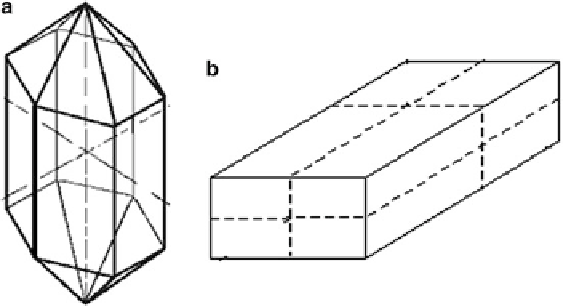Biomedical Engineering Reference
In-Depth Information
Fig. 4.13
(
a
) See Problem 4.5.3. (
b
) See Problem 4.5.3
4.6 The Forms of the Symmetric Three-Dimensional
Linear Transformation A
In this section the definitions of the material symmetries given in Sect.
4.5
are used
in conjunction with the orthogonal transformation (
4.2
) characterizing a plane of
reflective symmetry and transformation law (A83) to derive the forms of the three-
dimensional linear transformation
A
for the material symmetries of interest. First,
since triclinic symmetry has no planes of reflective symmetry, there are no symme-
try restrictions for a triclinic material and the linear transformation
A
is unre-
stricted. This conclusion is recorded in Table
4.3
.
Monoclinic symmetry has exactly one plane of reflective symmetry. This means
that the material coefficients appearing in
A
must be unchanged by one reflective
symmetry transformation. Let
e
1
be the normal to the plane of reflective symmetry
so that the reflective symmetry transformation is
R
ðe
1
Þ
, given by the first of (
4.4
).
The tensor
A
is subject to the transformation
T
A
ðLÞ
¼
R
ðe
1
Þ
A
ðGÞ
½
R
ðe
1
Þ
(4.8)
R
ðe
1
Þ
. Substituting
which follows from the first of (A83) by setting
T
¼
A
and
Q
¼
for
A
and
R
ðe
1
Þ
in this equation, one finds that
2
3
2
3
2
3
2
3
A
11
A
12
A
13
A
21
A
22
A
23
A
31
A
32
A
33
100
010
001
A
11
A
12
A
13
A
21
A
22
A
23
A
31
A
32
A
33
100
010
001
4
5
¼
4
5
4
5
4
5
;

Search WWH ::

Custom Search